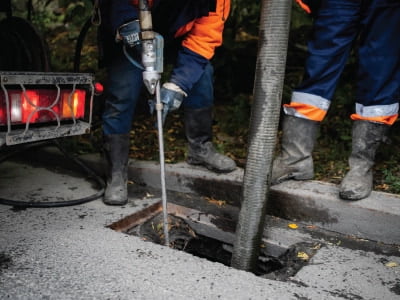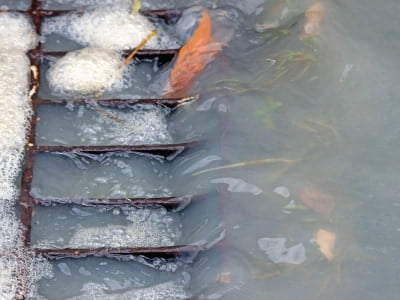Maintaining a healthy plumbing system is essential to ensure any property runs smoothly, whether that be residential or commercial. Drain pressure testing is a critical procedure that measures the integrity and efficiency of drainage systems. There are a couple of ways to test drain pressure, either through air or through the water drop test.
How is Air Pressure Testing Administered?
A pressure test is administered to a drain system by first ensuring that it is all empty and free of blockages or obstructions, and all access points to that section of the system are closed off, which may involve sealing off drains, sewer lines, and other openings using the appropriate plugs or caps. A specialised pump or air compressor is utilised to introduce air pressure into the plumbing system; the pressure level typically ranges from 5 to 10 psi, although this can vary depending on local regulations and test requirements. Once the pressure has been introduced, a gauge is monitored to regulate stability; if there is a significant drop in pressure over the course of around 5 minutes, this could indicate a leak in the system. At this point, all components are carefully inspected, including pipes, fittings, joints, and connections. The drainage company undertaking pressure testing will use this to identify weaknesses. undertaking pressure testing will use this to identify weaknesses.
How is a Water Drop Test Administered?
The water drop test is a way to check drains using low pressure. Here's how it works: First, a plug is used to seal off the end of the drain. Then, the system is filled with water and levels are watched either at a manhole or where pipe can be accessed. A chamber is filled with water all the way to the top. No extra pressure is added during this test. To keep it simple, the water level is kept as low as possible, ideally no more than 1.5 meters from the bottom of the drain being tested. After filling the chamber with water, it is left to sit for 5 minutes before adding more water. Then it is left to sit for another 10 minutes before adding more water again, after noting any changes. This test helps ensure there are no leaks in the drain system.

Why Drain Pressure Testing is Necessary
Identifying Leaks and Weaknesses
Over time, drains can develop leaks or weaknesses due to factors such as corrosion, wear and tear, or improper installation. These leaks may not always be visible or easily detectable without testing. Drain pressure testing allows for the identification of even small leaks or weaknesses that could lead to larger issues if left unaddressed.
Preventing Water Damage
Undetected leaks in drainage systems can result in water damage to property, including structural damage, mould growth, and deterioration of building materials. By conducting regular drain pressure testing, property owners can proactively identify and repair leaks before they escalate into more extensive damages that cost a lot more to fix.
Ensuring Compliance with Regulations
In many jurisdictions, property owners are required to comply with building codes and regulations related to plumbing systems. Regular drain pressure testing may be mandated as part of routine maintenance or inspections to ensure compliance with these regulations. Failure to adhere to regulatory requirements can result in fines or penalties for property owners.
Maintaining Operational Efficiency
Drainage systems that are compromised by leaks or blockages may experience reduced efficiency, leading to slow drainage, backups, or foul odours. By identifying and addressing issues through drain pressure testing, property owners can maintain the efficiency of their plumbing systems.

How Drainage Professionals Facilitate Drain Pressure Testing
Expertise and Experience
Companies like Grey-Water Drainage Solutions have the knowledge, expertise, and experience to conduct thorough drain pressure testing. Their trained technicians understand the intricacies of drainage systems and can accurately interpret test results to identify any issues.
Specialised Equipment
Specialists utilise equipment and tools specifically designed for drain pressure testing, like air bags, gauges, and pressure meters. This equipment allows for precise measurement of pressure levels and detection of leaks or weaknesses within the drainage system.
Comprehensive Inspection
Grey-Water offers comprehensive inspections as part of the drain pressure testing process. They thoroughly examine all components of the drainage system, including pipes, fittings, joints, and connections, to ensure no issues are overlooked.
Timely Repairs and Maintenance
In the event that leaks or weaknesses are identified during drain pressure testing, professionals can promptly undertake necessary repairs or maintenance. This proactive approach helps to prevent further damage and ensures the long-term health and reliability of the plumbing system.

